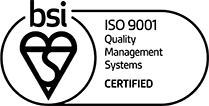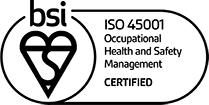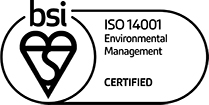At Nikwax we make products designed to be used in the home, where cross contamination of food and air is a real possibility. That is why we take such care to select only ingredients which we know to be safe, and avoid chemicals which pose a potential risk to human and environmental health.
All our aftercare products are manufactured in the UK, so our use of chemicals is regulated by the European REACH Legislation. But, as with many environmental issues, we feel the Law does not always go far enough, and can be slow to react to new information. In addition to compliance with the chemical restrictions defined by REACH (see list of restricted chemicals), our own team of scientists, including two PhD chemists, has developed a stricter list based on a precautionary approach.
Where there is concern over an ingredient’s safety within our formulations, we make our assessment by reviewing the scientific papers for ourselves. We maintain a healthy suspicion of studies carried out internally by large chemical companies, since their impartiality cannot always be guaranteed. To find out more about how we approach chemical safety, visit our Philosophy and Principles page.
Our compliance with both REACH, and our own RSL (shown below), is audited regularly as part of our ISO certificated Integrated Management System. Our ISO auditor is the British Standards Institution.



The following table summarises the chemicals or groups of chemicals which we consider a potential risk to human health or the environment, and therefore exclude from our aftercare formulations. Trace level impurities of the chemicals listed may be detectable in some cases (even tap water can contain background PFC pollution). This table does not include potentially harmful substances with no conceivable application in outdoor aftercare products.
| Chemical or group of chemicals | Reason for exclusion |
|---|---|
| Phthalates | In accordance with the Greenpeace Detox list of 11 priority hazardous chemicals. |
| Brominated & Chlorinated Flame retardants | In accordance with the Greenpeace Detox list of 11 priority hazardous chemicals. |
| Azo dyes | In accordance with the Greenpeace Detox list of 11 priority hazardous chemicals. |
| Organotin Compounds | In accordance with the Greenpeace Detox list of 11 priority hazardous chemicals. |
| Chlorobenzenes | In accordance with the Greenpeace Detox list of 11 priority hazardous chemicals. |
| Chlorinated Solvents | In accordance with the Greenpeace Detox list of 11 priority hazardous chemicals. |
| Chlorophenols | RIn accordance with the Greenpeace Detox list of 11 priority hazardous chemicals. |
| Short chain chlorinated paraffins | RIn accordance with the Greenpeace Detox list of 11 priority hazardous chemicals. |
| Alkyl phenols & their ethoxylates (APEOs) | In accordance with the Greenpeace Detox list of 11 priority hazardous chemicals. |
| Heavy Metals such as Cadmium, Lead, Mercury and Chromium. | In accordance with the Greenpeace Detox list of 11 priority hazardous chemicals. |
| ROrganofluorine and /or Perfluorinated compounds (fluorocarbons, fluorotelomer alcohols, fluoropolymers and all PFCs including PFOS and PFOA. | In accordance with the Greenpeace Detox list of 11 priority hazardous chemicals. Many degradation products of perfluorinated polymers have been found to be environmental persistent and potentially highly toxic. More about fluorocarbons here. |
| Phosphates | Phosphates can cause eutrophication in waterways. |
| Aromatic hydrocarbon solvents | Some organic hydrocarbon solvents are potentially carcinogenic. They are also flammable. |
| Hydrocarbon gases used in aerosols | Hydrocarbon aerosol gases (butane and propane) are strong greenhouse gases. They may also combine with Nitrogen Oxides and ultraviolet light to produce ozone pollution. Hydrocarbon gases are also highly flammable. |
“We at Nikwax have a firm commitment to environmental stewardship and remain dedicated to developing the most sustainable products possible.”
